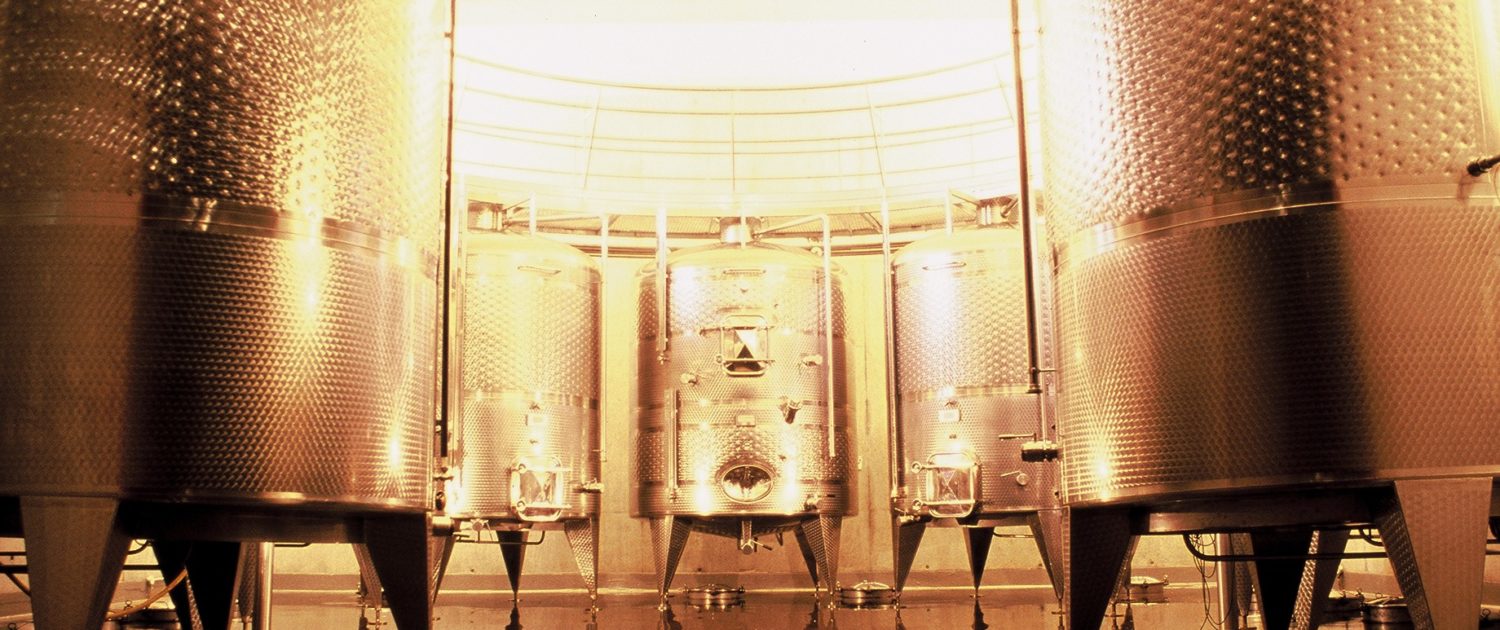VINIFICATION
Upon their arrival from the vineyards, the picked grapes are once again quality checked on a conveyor, picking out leaves, sub-standard bunches and any other detritus that has made it to that point (including the odd golf ball!). They are then de-stemmed and lightly crushed before entry into the winery.
The wine making process goes indoors and the vinification begins. The grapes are put into large stainless steel vats, separated by grape variety and individual parcels of land. In this way, when the wines are made and matured, we can blend the different varieties and parcels to produce exactly the blend that we want.
FERMENTATION
Yeast is added to the vats and the natural sugars within the grapes begin to ferment until all the sugar turns to alcohol. This initial fermentation takes only around a week. Another important process at this stage is the development of the wine’s colour and structure.
Almost all black grapes have white flesh and produce white juice. The colour and character of a red wine is only developed by leaving this juice in contact with the skins for approximately 3 weeks. To make sure that fermentation, colour and structure develop evenly we regularly pump the wine from the bottom of the vat back up to the top where it is passed through the ‘cap’ of skins and solid matter that naturally floats to the surface.
This is where rosé differs from red wine. It’s not normally, as some mistakenly believe, a blend of red and white wines. Rather, it is wine made from black grapes but only left in contact with the skins for a much shorter period than its red cousins. (A matter of only 3-4 hours in our case.)
MATURING
After fermentation the majority of the wine is transferred to start the ageing process into concrete vats. A small percentage of wine from our oldest parcels will spend some time in French oak barrels. Unlike the inert environment of the stainless steel vats in which we ferment our wines, both concrete vats and oak barrels allow the wines to ‘breath’ as the mature. This slow, controlled interaction with the atmosphere allows the tannins within the wines to begin to ’round out’ and soften.
BLENDING AND BOTTLING
Throughout the ageing period the wine is tasted frequently and the complementary nature of each component is carefully considered by blending. The final blend (the ‘assemblage’) is chosen according to the particular characteristics of that vintage and, after an eighteen month to two-year period of maturation, is put into the bottle here at the Domaine.






